Welcome to the educationally fun world of elk coloring pages, where the majesty of these magnificent creatures comes to life through the strokes of your imagination. Elk, also known as wapiti, with their towering antlers and graceful presence have long been a symbol of the wild and untamed beauty of the great outdoors. In this article, we’ll explore the artistry and relaxation that coloring can bring as we delve into a collection of elk-themed coloring sheets.
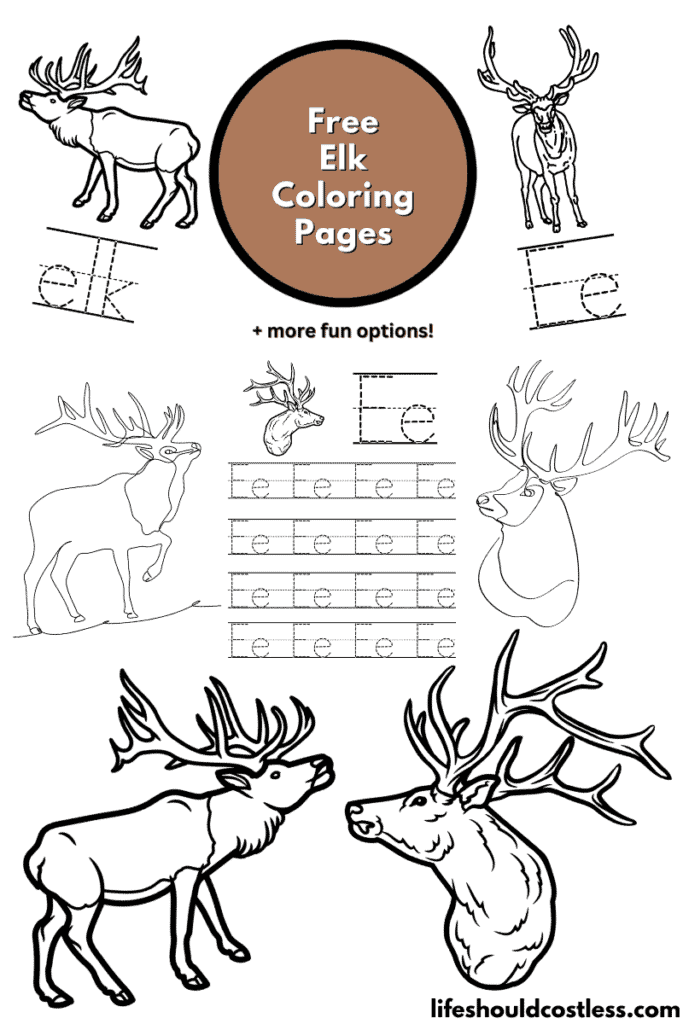
Feel free to select any design that catches your attention. Simply choose your preferred template, download the complimentary PDF, print it, and let your coloring creativity flow to your hearts desire.
These templates can also serve as embroidery patterns or provide inspiration for intricate fine line tattoos. The possibilities are as vast as your imagination allows.
Elk facts
For newcomers to my coloring pages, it’s worth noting that I take pleasure in offering you the chance to explore the topic in-depth.
This allows you to effortlessly integrate your coloring adventure into a learning experience.
With that in mind, let’s get started!
Here are lots of fun and interesting, simplified, facts about elk:
- Majestic Antlers: Elk are renowned for their large and impressive antlers. They can weigh up to 40 pounds (18 kilograms) and span up to 5 feet (1.5 meters) in width.
- Size Matters: Among North American land mammals, adult male elk, known as bulls, are one of the largest. They can stand around 4.5 to 5 feet (1.4 to 1.5 meters) tall at the shoulder.
- Distinctive Call: During the rutting season, bull elk produce a bugling call that can be heard for miles. It’s a haunting and iconic sound of the wilderness.
- Herding Behavior: Elk are social animals and often gather in herds. These herds can range from a few individuals to several hundred, depending on the season.
- Range of Habitat: Elk are highly adaptable and can be found in a variety of ecosystems, including forests, grasslands, and mountains. They inhabit North America and parts of Asia.
- Diet Diversity: Their diet consists of grasses, shrubs, and even tree bark. They are herbivores with a varied palate.
- Swimming Skills: Elk are good swimmers and are known to cross rivers and lakes when necessary, sometimes even covering several kilometers in the water.
- Longevity: In the wild, elk typically live 10-15 years, while those in captivity can live longer.
- Speed and Agility: Despite their large size, elk are agile and can run at speeds of up to 40 miles per hour (64 kilometers per hour), making them difficult prey for predators.
- Calves and Twins: Elk give birth to calves in late spring or early summer, and occasionally, twins are born. Calves are often spotted with white spots that fade as they grow.
- Conservation Success: Elk populations have made a remarkable recovery in North America due to conservation efforts, including reintroduction programs.
- Migration: Some elk herds engage in seasonal migrations, traveling between higher elevations in the summer and lower valleys in the winter to find food.
- National Symbol: Elk are the state animal of Utah and are also depicted on the Wyoming state flag.
- Elk Velvet: The soft, skin-covered antlers of young male elk are called “velvet.” They’re rich in nutrients and are used in traditional medicine in some cultures.
- Predators: Natural predators of elk include wolves, bears, and mountain lions. Human hunting is also a significant factor.
- Courtship Rituals: During the rut, bulls engage in intense competition for mates, with elaborate displays of posturing and vocalization.
- Reclusive Behavior: While elk are often seen in the open during the rut, they tend to be more reclusive at other times of the year, seeking cover in forests.
- Shedding Antlers: Bulls shed their antlers each year and grow a new set. This process is influenced by changes in daylight and hormone levels.
These intriguing facts about elk showcase their unique biology, behavior, and significance in the natural world.
Elk are not only impressive in appearance, but also play a vital role in maintaining the balance of their ecosystems.
We learned lots about elk, but there’s much know to know.
If you would like to read more about them, here are some other reputable resources to check out.:
- https://en.wikipedia.org/wiki/Elk
- https://a-z-animals.com/blog/10-incredible-elk-facts/
- https://www.britannica.com/animal/elk-mammal
- https://www.pbs.org/video/elk-video-short-d4k-i57toe/
- https://www.rmef.org/elk-facts/
- To see all of my free printables, go here.
- If you would like to see an alphabetized index of free printable coloring pages, go here!
- All of my animals coloring pages are found here.
- Or, my other mammals coloring pages can be found here.
Coloring tips
Coloring a picture of an elk can be a delightful and creative experience.
Here are some of my best tips and tricks to make your elk artwork really come to life:
- Gather Coloring Supplies: Collect colored pencils, markers, or crayons, choosing high-quality materials for better results.
- Reference Images: Use reference images of elk to understand their natural colors and markings for a realistic representation.
- Gradual Coloring: Start with light strokes and layer colors gradually to create depth and dimension.
- Layering Colors: Experiment with different colors to mimic realistic fur textures, blending to achieve variations in shade.
- Earthy Tones: Use browns, tans, and grays for the base colors, as elk are typically brown or tan with darker shades on their legs and face.
- Highlight and Shadow: Add highlights where light hits and shadows in shaded areas to provide depth.
- Attention to Detail: Pay special attention to details like the eyes, nose, and antlers, using fine-tip pens or pencils for intricate work.
- Background Elements: Consider adding a background, like a forest or mountains, to enhance the overall composition.
- Blending Techniques: Experiment with blending tools such as blending pencils or blending stumps for smooth color transitions.
- Texture Effects: Simulate elk fur texture with techniques like stippling, hatching, or cross-hatching.
- Color Harmony: Maintain a cohesive color palette that complements the elk’s natural colors for a harmonious composition.
- Patience is Key: Coloring intricate details takes time, so be patient and enjoy the creative process.
- Experiment and Enjoy: There are no strict rules in coloring; experiment with techniques, color combinations, and styles to express your creativity.
- Display or Share Your Art: Once completed, consider framing or sharing your elk color page with others to showcase your artwork.
These tips and tricks should help you create a beautifully colored representation of an elk while still enjoying the creative process.
Options For Printing:
Letter E is for elk writing practice worksheets
*My letter E is for elk printable coloring sheets are exclusively tailored for classroom usage and are the only printable selections on this page that do not necessitate written permission for public utilization.
However, if someone inquires about their origin, please provide them with the link to this post should they inquire about the source.
Your support is greatly appreciated!
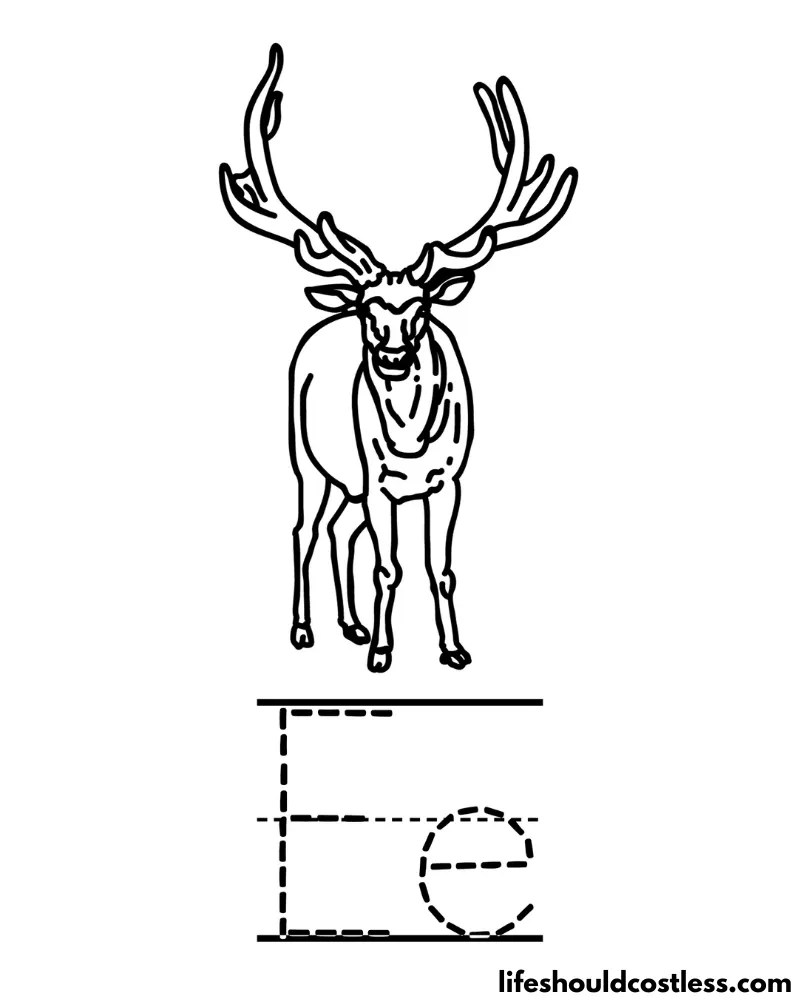
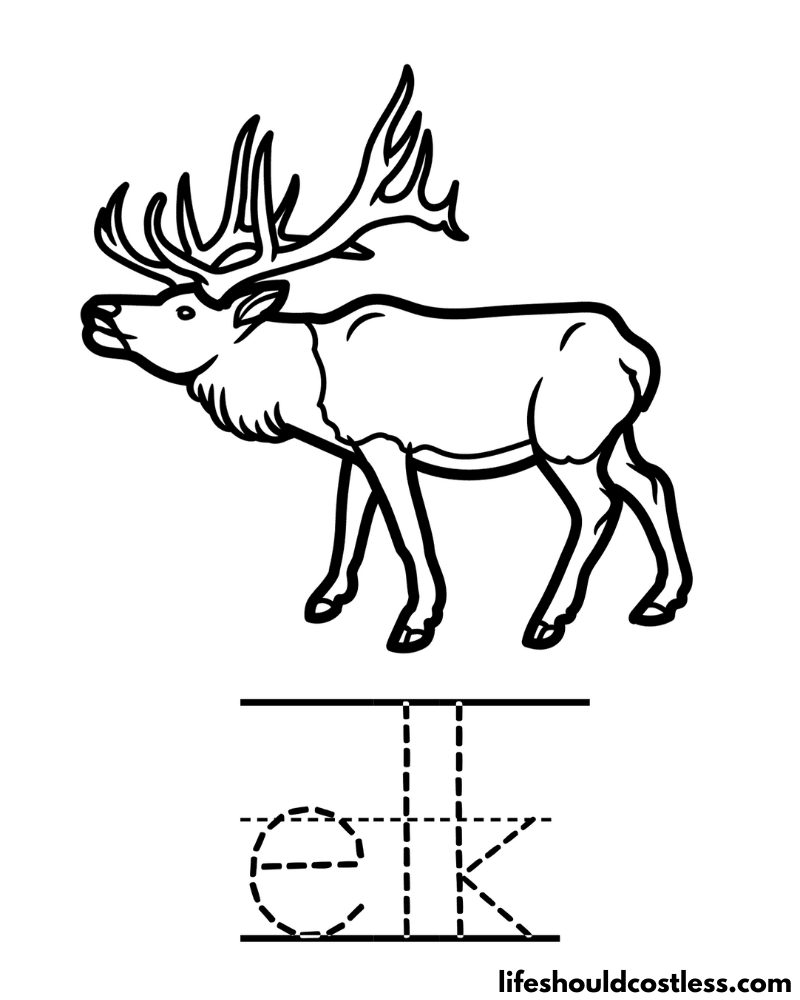
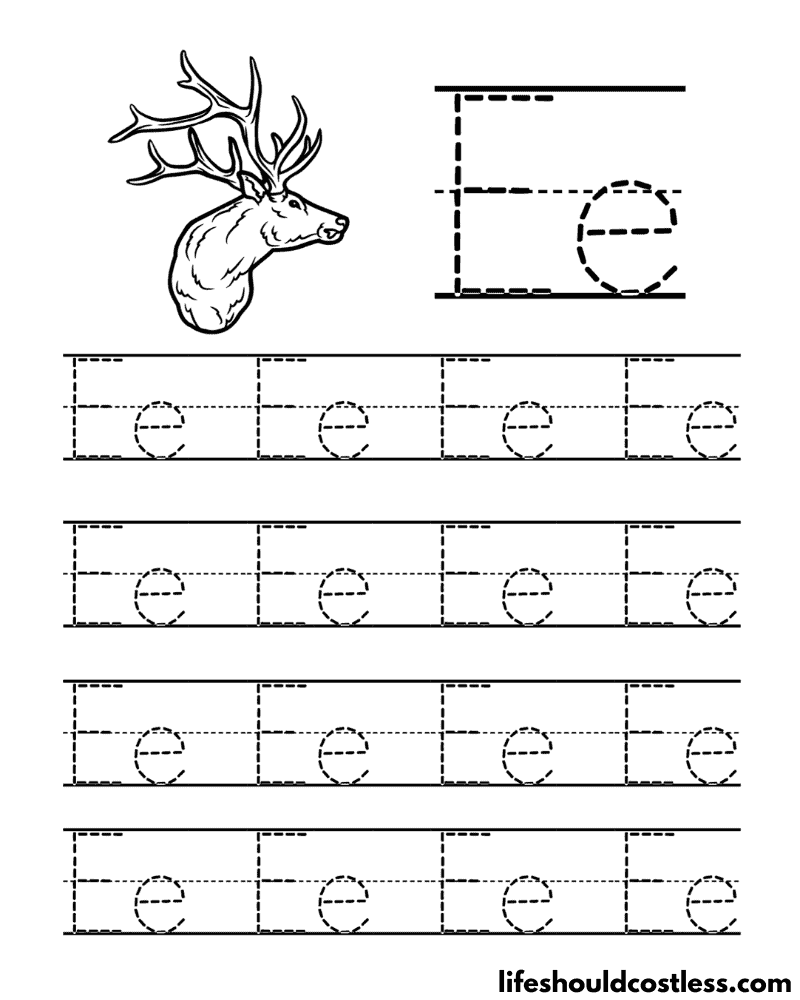
Various elk designs

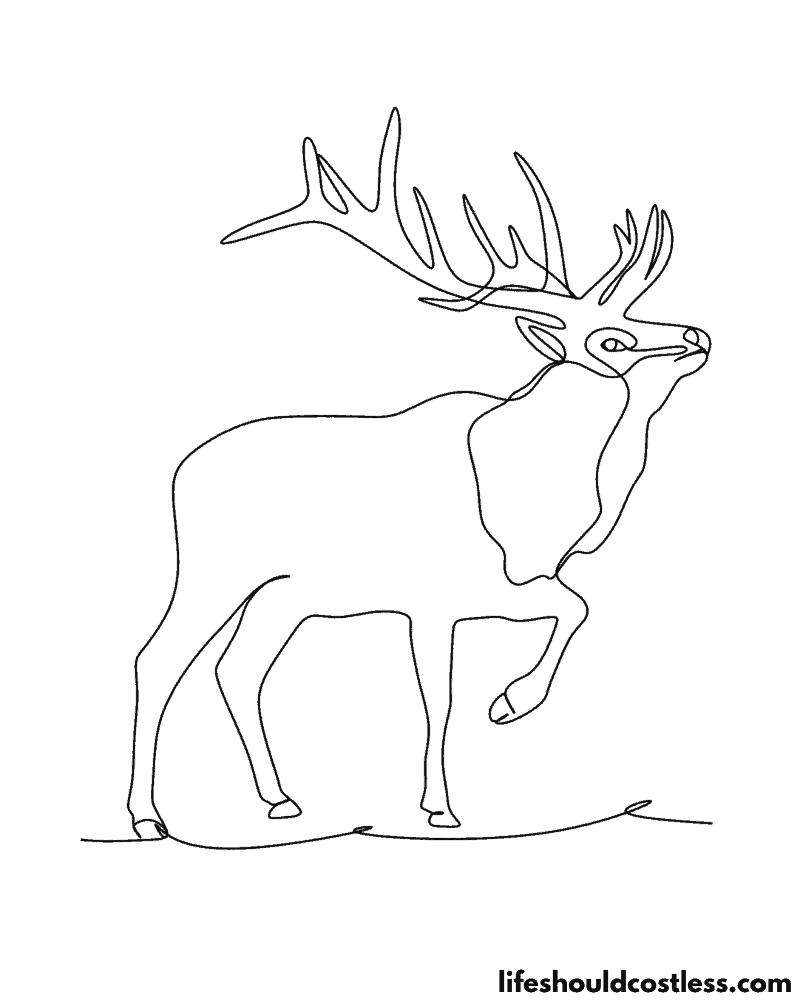
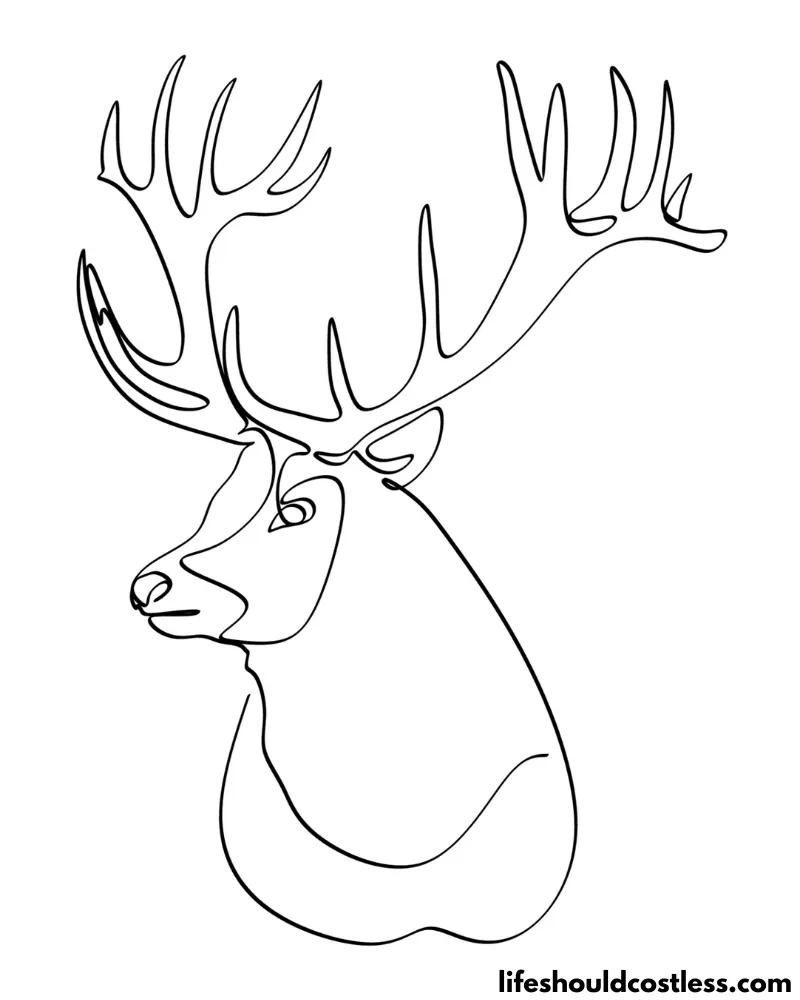
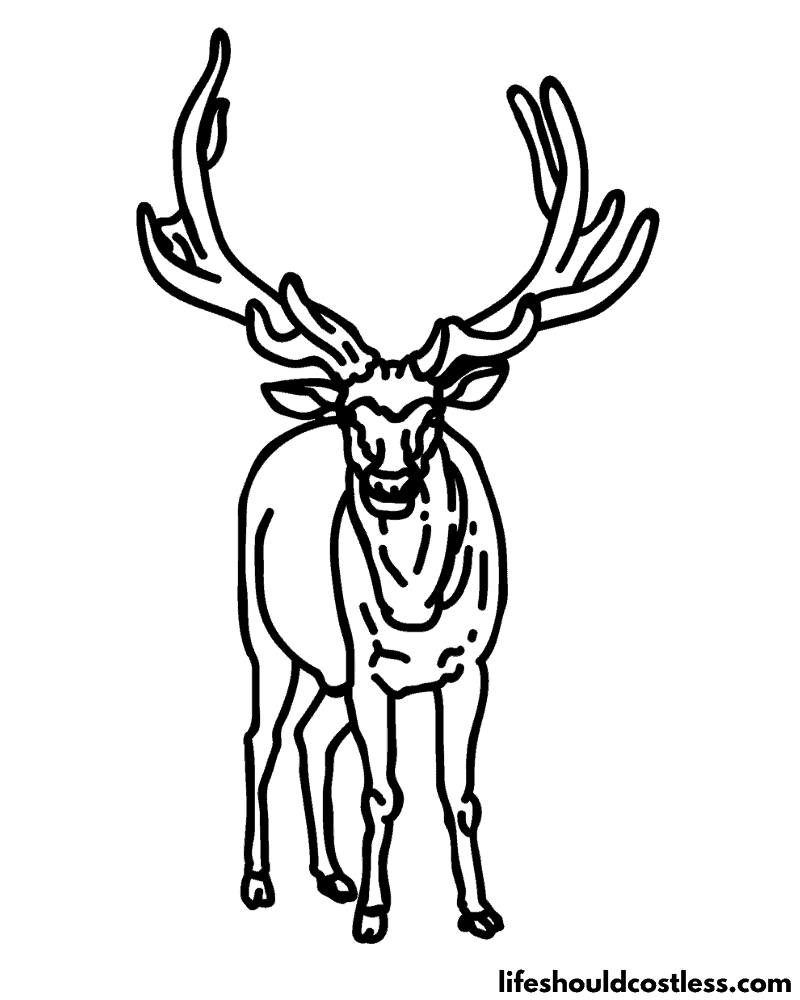
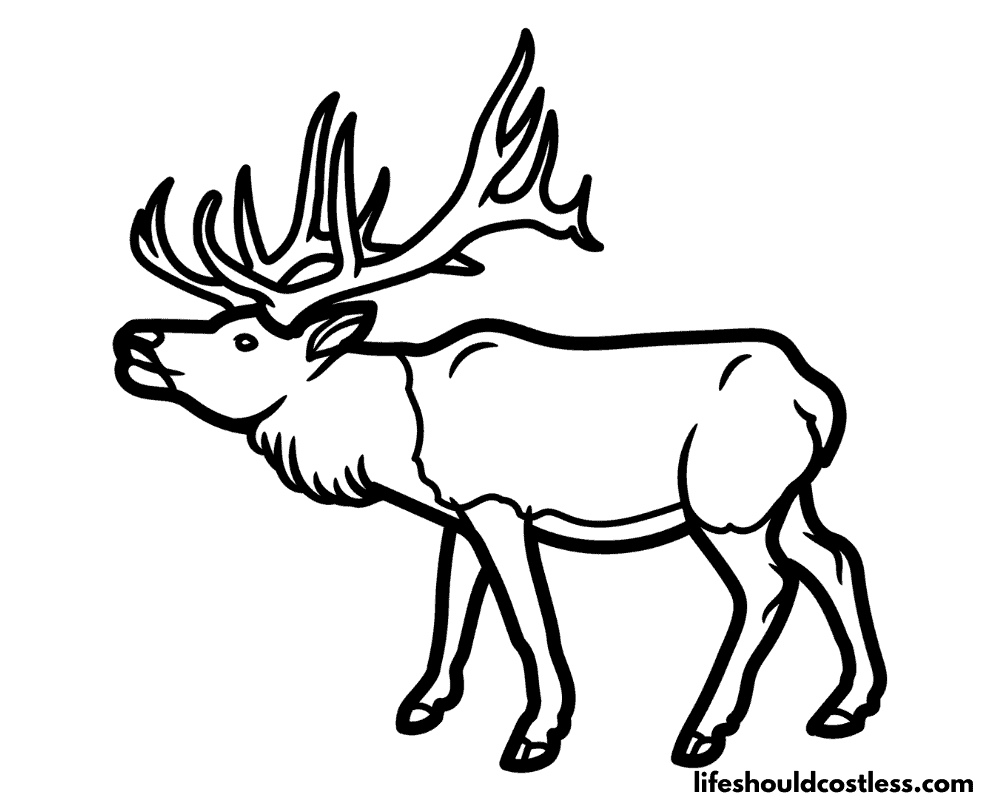
FAQ’s
Elk, also known as wapiti, typically have a range of earthy and natural colors in their fur. The specific colors can vary somewhat, but here are the general colorations you might find in elk:
Body: Elk are commonly brown or tan in color, with a reddish or coppery hue. This coloration helps them blend into their forested habitats.
Neck and Mane: The neck and mane of male elk (bulls) are often darker, sometimes almost black or gray, especially during the rut (breeding season). This darker coloration can be more prominent in older bulls.
Legs and Face: The legs and face of elk are typically darker than the body, often a shade of brown or gray. This contrast in color helps them appear more camouflaged.
Rump Patch: Some elk have a lighter patch of fur on their rump, which can be yellowish or cream-colored. This feature is more common in females (cows).
Calves: Elk calves are often spotted with white spots on a brown background. These spots fade as the calves grow older.
Antlers: The antlers of male elk are typically brown or tan and can darken as they age. During the rut, the antlers might appear darker due to rubbing against trees and vegetation.
It’s important to note that the coloration of elk can vary based on factors such as age, season, and individual genetics.
Additionally, elk are known for their adaptability, so their fur colors can blend well with the natural surroundings in different environments.
*I will add more elk colour / color questions and answers as the questions get sent to me.
Conclusion
In conclusion, our elk coloring pages offer a remarkable journey into the world of creativity, allowing enthusiasts of all ages to connect with the awe-inspiring joy of these majestic creatures.
As we’ve explored the artistry and relaxation that coloring can bring, we’ve also come to appreciate the intricate details of elk, from their stunning antlers to their earthy-toned fur.
Whether you’re an aspiring artist seeking to perfect your skills, a nature lover celebrating the wild beauty of elk, or simply someone looking for a therapeutic escape, these coloring pages provide a canvas for your imagination.
So, as you pick up your colored pencils and embark on your coloring adventure, remember that each stroke brings you closer to capturing the essence of these magnificent animals.
Let your creativity flourish, and may your elk-themed masterpieces reflect the spirit of the wild for all to enjoy.
Happy coloring!
Thanks so much for stopping by my blog and supporting my endeavors to make people’s lives a little easier/better/more affordable.
If you liked this post, or found it helpful in any way, please make sure to share it with your family, friends, and co-workers via social media.
Or you could even send them the direct link via email. Whichever way you choose to spread the love, I super appreciate it! ~Sarah
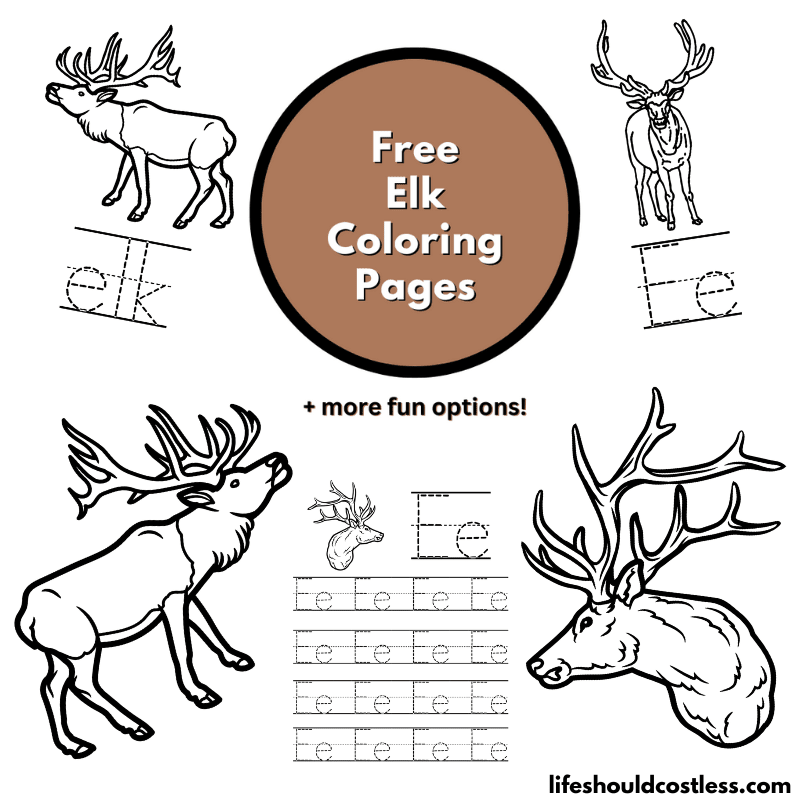
How To Follow & Support This Site
- If you would like to subscribe to my email list, go here.
- Make sure to follow along via social media, by going here.
- If you would like to learn how to really show your support to this site (at no cost to you), go here.
- If you would like to make a direct donation to the site, go here.
Check out my other free printables
- To see all of my free printables, go here.
- If you would like to see an alphabetized index of free printable coloring pages, go here!
- All of my animals coloring pages are found here.
- Or, my other mammals coloring pages can be found here.
Otherwise, here are direct links to several of my other related posts that you’re also going to love:
Animals / Mammals
Animals / Birds
Animals / Insects
Other good resources for a printable elk
- https://www.coloringpages.org/cat-moose-and-elk-408.htm
- https://www.first-school.ws/theme/animals/cp_wild/elk-wapiti-coloring-pages.htm
- https://www.edupics.com/coloring-page-elk-fighting-i9467.html#
*This post was originally shared to this blog on 11/28/2023, and has since been updated to improve user experience, add video instruction, as well as to make it as shareable as possible across the social medias.
**Please note that I do try my hardest to provide factual, but easy to understand, information about each topic. If you notice a discrepancy in my coloring pages, facts, or see something that you deem “misinformation/incorrect” please make sure to notify me about it. I would prefer that you send me an email with a link to a more reputable resource on that subject, so that I can correct it as soon as possible. Thanks so much for helping this site become the best that it can be!
***Resources from djinkers were used in the production of this article.
***Resources from djinkers were used in the production of this article.
